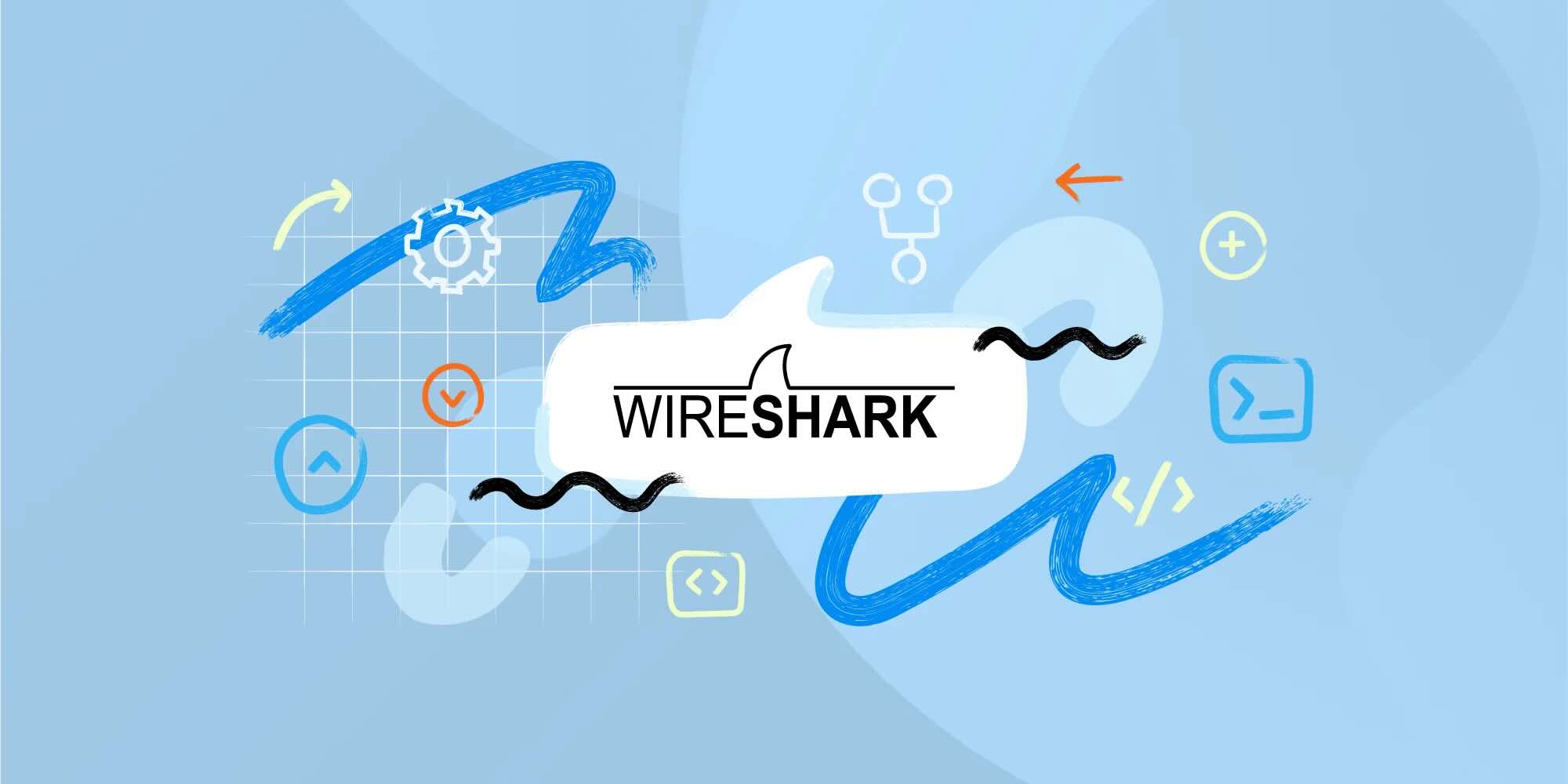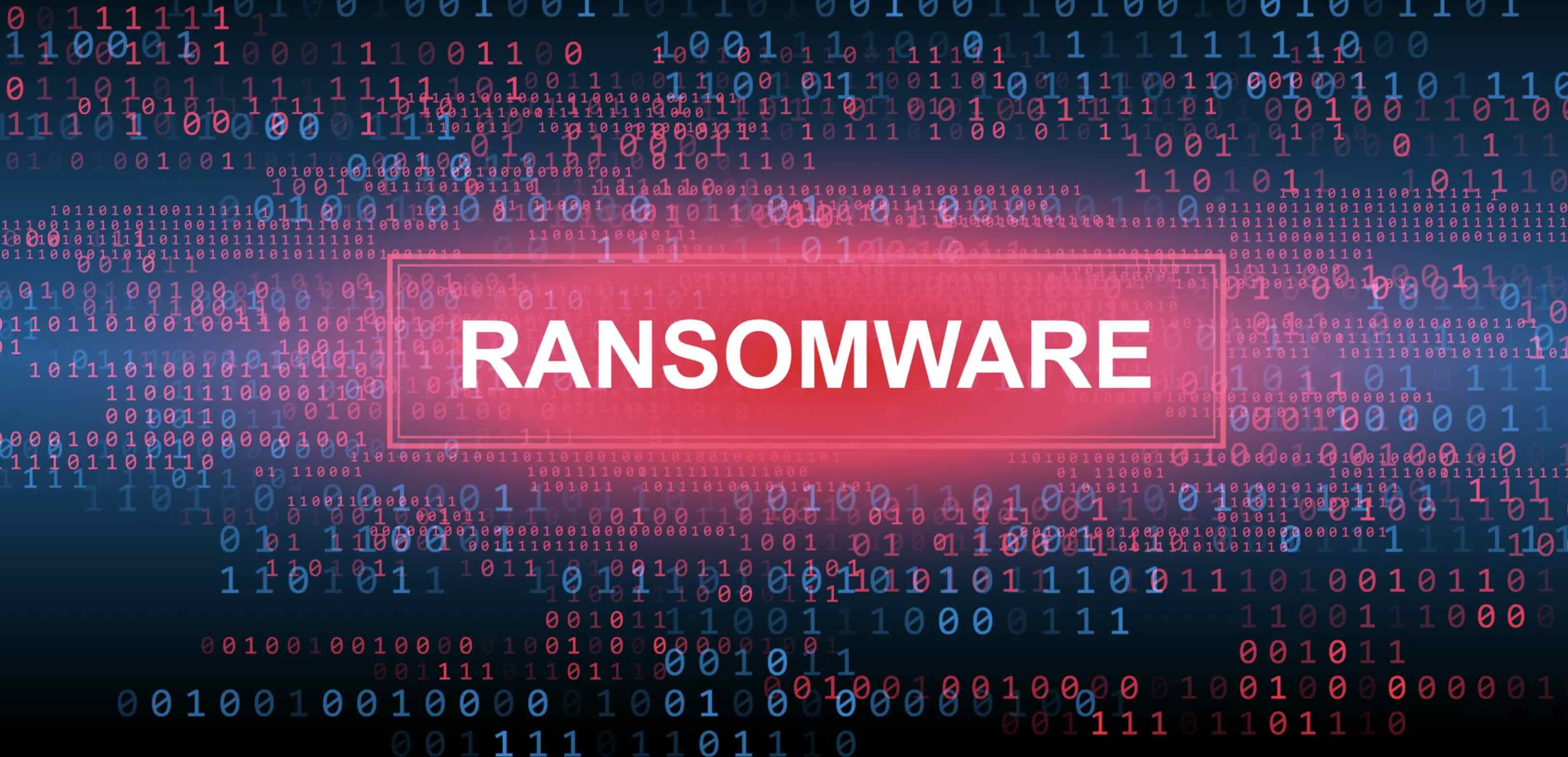Home>Home Security and Surveillance>How Can Wireshark Be Used As An Intrusion Detection Tool


Home Security and Surveillance
How Can Wireshark Be Used As An Intrusion Detection Tool
Modified: August 17, 2024
Learn how to use Wireshark as an effective intrusion detection tool for home security and surveillance. Protect your network with this powerful software.
(Many of the links in this article redirect to a specific reviewed product. Your purchase of these products through affiliate links helps to generate commission for Storables.com, at no extra cost. Learn more)
Introduction
With the rising concerns about home security, homeowners are increasingly turning to surveillance systems to protect their properties. A home security and surveillance system acts as a deterrent to potential intruders and provides peace of mind for homeowners.
One of the key components of a comprehensive home security system is an effective intrusion detection tool. A tool that can detect and alert homeowners of any potential breaches in their security system is crucial in ensuring the safety of their homes and loved ones.
In this article, we will explore how Wireshark, a popular network protocol analyzer, can be utilized as an intrusion detection tool. We will delve into the basics of intrusion detection, discuss the features and capabilities of Wireshark for this purpose, and provide tips and best practices for setting up and using Wireshark effectively.
Whether you are a homeowner looking for ways to enhance your home security system or a security enthusiast interested in understanding how Wireshark can be used for intrusion detection, this article will provide you with valuable insights and guidance.
Now, let’s dive into the world of Wireshark and discover how it can be leveraged as a powerful intrusion detection tool for protecting your home.
Key Takeaways:
- Wireshark is a powerful tool for detecting potential security threats in home networks by capturing and analyzing network traffic, but it’s important to combine it with other security measures for comprehensive protection.
- To make the most of Wireshark for home security, users should stay updated, plan ahead, understand their network’s normal behavior, and collaborate with threat intelligence sources for effective intrusion detection.
What is Wireshark?
Wireshark is an open-source network protocol analyzer that allows users to capture and analyze network traffic in real-time. It is available for various operating systems, including Windows, macOS, and Linux, making it accessible to a wide range of users.
At its core, Wireshark provides the ability to capture packets of data sent over a network and dissect them for analysis. This makes it an invaluable tool for network administrators, developers, and security professionals to troubleshoot network issues, analyze performance, and investigate network security incidents.
Wireshark supports a wide range of protocols, including popular ones such as TCP/IP, HTTP, DNS, and FTP, among many others. This versatility enables it to capture and analyze different types of network traffic, making it a powerful tool for understanding how data flows across a network.
One of the key strengths of Wireshark is its ability to provide detailed packet-level analysis. It captures packets at the network interface level and displays various attributes of each packet, such as source and destination IP addresses, protocol type, packet length, and timing information. Additionally, Wireshark can dissect the content of packets and provide specific information about the data being transmitted.
By capturing and analyzing network traffic, Wireshark allows users to gain insight into how the network is functioning and identify any anomalies or security threats. It provides a wealth of information that can help in detecting and responding to network intrusions.
Next, we will explore the basics of intrusion detection and understand how Wireshark can be used as an effective tool in this context.
Basics of Intrusion Detection
Intrusion detection is the process of monitoring and analyzing network traffic or system logs to identify unauthorized or malicious activities that could potentially compromise the security of a network or system.
There are two main types of intrusion detection: network-based intrusion detection and host-based intrusion detection.
Network-based intrusion detection involves monitoring network traffic to identify suspicious or malicious patterns. It focuses on analyzing packets and flow data to detect unauthorized access attempts, port scans, and other suspicious activities.
Host-based intrusion detection, on the other hand, involves monitoring activity on individual hosts or servers. It looks for signs of unauthorized access, file modifications, abnormal system behavior, and other indicators of a possible intrusion.
Both network-based and host-based intrusion detection are crucial components of a comprehensive security framework. They work together to provide a layered approach to detecting and responding to potential threats.
Now that we have explored the basics of intrusion detection, let’s take a closer look at how Wireshark can be utilized as an effective intrusion detection tool.
Wireshark as an Intrusion Detection Tool
While Wireshark is primarily known for its network analysis capabilities, it can also be highly effective as an intrusion detection tool. By capturing and analyzing network traffic, Wireshark can help identify suspicious activities and potential intrusions in real-time.
Wireshark’s ability to capture and dissect packets allows it to detect anomalies and patterns that may indicate malicious behavior. It can help identify port scans, network reconnaissance, DoS attacks, and other suspicious activities that could compromise the security of a network.
One of the key advantages of using Wireshark as an intrusion detection tool is its ability to provide detailed packet-level analysis. Network administrators and security professionals can examine the content of individual packets to identify potential threats or anomalies. They can look for specific patterns, abnormal packet sizes, unexpected protocol behavior, or unrecognized network traffic.
In addition to real-time analysis, Wireshark also provides the ability to save captured packets for later analysis. This allows for retrospective examination of network traffic to identify any missed threats or gain further insights into the nature of an intrusion.
Wireshark’s extensive protocol support and customizable filtering capabilities further enhance its effectiveness as an intrusion detection tool. Users can create custom filters to focus on specific protocols, source or destination IP addresses, ports, or any other criteria of interest. This enables targeted analysis and detection of potential security threats.
It is important to note that while Wireshark can be a powerful intrusion detection tool, it should not be relied upon as the sole means of securing a network. It is recommended to use Wireshark in conjunction with other security measures, such as firewalls, antivirus software, and intrusion prevention systems, to create a robust defense against network threats.
Now that we understand the potential of Wireshark as an intrusion detection tool, let’s explore its features and capabilities in more detail.
Features and Capabilities of Wireshark for Intrusion Detection
Wireshark offers a wide range of features and capabilities that make it an effective tool for intrusion detection. From packet capture to detailed analysis, here are some of the key features that make Wireshark a valuable asset in detecting and responding to potential intrusions:
- Packet Capture: Wireshark can capture network packets in real-time, allowing for the analysis of live network traffic. This provides the opportunity to identify and respond to security breaches as they happen.
- Affinity for Network Protocols: Wireshark supports a vast array of network protocols, allowing for comprehensive analysis. From TCP/IP and HTTP to DNS and FTP, Wireshark can dissect and analyze the protocols commonly used in network communications.
- Packet Dissection: Wireshark can decode and analyze the content and structure of network packets, providing valuable insights into the data being transmitted. This enables the detection of suspicious or malicious payloads within the packet payload.
- Filtering and Search: With its flexible filtering capabilities, Wireshark allows users to focus on specific network traffic based on various criteria such as source or destination IP addresses, ports, protocol types, or even specific keywords. This enables targeted analysis and detection of potential threats.
- Statistics and Graphs: Wireshark provides statistical information about network traffic, including packet count, traffic volume, and protocol distribution. Additionally, it offers graphing capabilities to visually represent network patterns and identify anomalies or spikes in traffic.
- Expert System: Wireshark includes an expert system that leverages predefined rules and heuristics to automatically detect and highlight potential issues or anomalies in network traffic. This aids in identifying suspicious activities and potential security threats.
- Customizability: Wireshark is highly customizable, allowing users to modify and extend its functionality through the use of plugins and scripting. This enables the creation of personalized intrusion detection workflows and tailored analysis tools.
By harnessing these features and capabilities, Wireshark provides network administrators and security professionals with the tools necessary to detect and respond to potential intrusions effectively.
Now that we understand the powerful features of Wireshark, let’s explore how to set it up for intrusion detection in a home security context.
Setting up Wireshark for Intrusion Detection
Setting up Wireshark for intrusion detection requires a step-by-step approach to ensure that the tool is configured correctly and optimized for capturing and analyzing network traffic. Here are the key steps to follow:
- Install Wireshark: Begin by downloading and installing Wireshark on the desired operating system. The official Wireshark website provides installation packages for Windows, macOS, and Linux, making it accessible to a wide range of users.
- Select the Network Interface: Launch Wireshark and select the network interface to capture packets. It is essential to choose the interface that is connected to the network where intrusion detection is required. This could be either a wired or wireless interface.
- Adjust Capture Filters: Configure the capture filters to focus on relevant traffic for intrusion detection. You can set filters to capture traffic from specific IP addresses, ports, or protocols of interest. This helps reduce the amount of captured data and allows for more efficient analysis.
- Create Display Filters: Use display filters to further refine the analysis and display only the packets that are relevant for intrusion detection. Display filters can be based on various criteria, such as IP addresses, protocols, keywords, or even specific patterns in packet content.
- Start Packet Capture: Initiate packet capture in Wireshark and let it run in the background to capture network traffic continuously. It is recommended to capture data for an extended period to gather a sufficient amount of traffic for analysis.
- Analyze Captured Packets: Once enough packets have been captured, analyze them in Wireshark. Look for any suspicious activities, patterns, or anomalies that may indicate a network intrusion. Examine packet details, payload content, and protocol behavior to gain insights into potential threats.
- Implement Alerts: Set up alerts or notifications in Wireshark to receive timely notifications when specific criteria are met. This can be based on specific packet characteristics, protocol violations, or abnormal network behavior. Alerts help in quickly detecting and responding to potential intrusions.
- Regular Updates and Maintenance: Keep Wireshark updated with the latest version and security patches. Regularly review and update capture and display filters to adapt to new threats or changes in network requirements.
By following these steps, you can set up Wireshark for intrusion detection and harness its powerful capabilities to enhance the security of your home network.
Now that we have covered the setup process, let’s explore how to effectively analyze network traffic using Wireshark for intrusion detection purposes.
Tip: Use Wireshark to monitor network traffic for suspicious activity, such as unusual connections or unexpected data transfers. Set up filters to focus on specific protocols or IP addresses to better detect potential intrusions.
Analyzing Network Traffic with Wireshark
Once you have captured network packets using Wireshark, the next step is to analyze them effectively. Proper analysis of network traffic is crucial for detecting potential intrusions and identifying security threats. Here are some key steps to consider when analyzing network traffic with Wireshark:
- Filter the Captured Packets: Use display filters in Wireshark to filter out irrelevant packets and focus on the ones that are of interest for intrusion detection. Filters can be based on specific IP addresses, protocols, ports, or keywords related to known threats.
- Identify Baseline Traffic: Establish a baseline of normal network traffic for your network. This allows you to identify deviations and anomalies that may indicate potential intrusions. Analyzing the behavior of packets in the context of the baseline helps in identifying abnormal traffic patterns.
- Examine Packet Details: Dive into the details of individual packets to understand their structure and content. Wireshark provides a comprehensive view of packet attributes such as source and destination IP addresses, protocol type, packet size, and timing information. Analyze packet headers and payloads for any suspicious or unexpected information.
- Look for Anomalies: Identify any abnormal patterns in network traffic, such as unusually high packet rates, large amounts of incoming or outgoing traffic, or unexpected communication between specific hosts. These anomalies can indicate potential intrusions or malicious activities.
- Identify Protocol Violations: Wireshark can detect protocol violations or abnormal protocol behavior. Look for protocol-specific errors, unexpected sequences of packets, or non-compliant behavior that may indicate a security issue or potential intrusion.
- Analyze Payload Content: Analyze the content of packet payloads for any signs of malicious activity. This includes looking for suspicious commands, unauthorized data transfers, or unusual file formats. Pay attention to packet payloads in protocols such as HTTP, FTP, or SMTP, where sensitive data may be transmitted.
- Follow Packet Flows: Use Wireshark’s ability to follow packet flows to understand the sequence of packets exchanged between hosts. This can help in reconstructing network sessions and identifying any suspicious or irregular patterns of communication.
- Use Statistical Analysis: Wireshark provides statistical information about network traffic. Utilize this information to spot anomalies or irregularities in packet counts, traffic volume, or protocol distribution. Pay attention to sudden spikes or drops in traffic that could indicate a security incident.
Remember, effective network traffic analysis requires a combination of technical expertise, knowledge of network protocols, and an understanding of potential threats. It is essential to stay updated on the latest vulnerabilities, attack techniques, and security best practices to enhance your analysis capabilities.
Now that we have explored the process of analyzing network traffic, let’s move on to detecting intrusions using Wireshark.
Detecting Intrusions with Wireshark
Wireshark is a powerful tool for detecting intrusions by analyzing network traffic and identifying suspicious activities. By examining packet details, protocol behavior, and payload content, you can spot indicators of potential security breaches. Here are some key techniques for detecting intrusions using Wireshark:
- Identify Unauthorized Access Attempts: Look for any suspicious login attempts or failed authentication packets. Analyze the source IP addresses, username/password combinations, and timing of these packets. Multiple failed login attempts from the same IP address or unusual login patterns can indicate a brute-force or credential-stuffing attack.
- Recognize Port Scans: Port scanning is a reconnaissance technique used by attackers to identify open ports on target systems. Wireshark can help detect port scans by analyzing a series of packets sent to multiple ports of a host. Look for packets with different destination ports originating from the same IP address, indicating a potential port scanning activity.
- Spot Unusual Protocols: Pay attention to any network traffic involving uncommon or suspicious protocols. This could include protocols associated with known malware, command and control communications, or protocols used for remote access without proper authorization. Wireshark’s protocol identification capabilities can easily identify such unusual protocols.
- Detect Denial of Service (DoS) Attacks: Wireshark can help identify DoS attacks by monitoring network traffic and analyzing any sudden spikes in packet rates or abnormal traffic patterns. Look for an excessive number of packets from a single source IP address, numerous connection requests, or abnormal traffic behavior that can indicate a DoS attack.
- Analyze Suspicious IP Addresses: Identify any IP addresses that are known to be associated with malicious activities or have been blacklisted. Cross-reference the source and destination IP addresses in your packet analysis with threat intelligence data to identify potential malicious connections.
- Inspect Unexpected Outbound Connections: Monitor outbound traffic and examine any connections originating from your network that are unexpected or unauthorized. This includes connections to suspicious or known malicious IP addresses, communication with command and control servers, or attempts to access unauthorized external resources.
- Look for Data Exfiltration: Examine packet payloads for any signs of data exfiltration, such as transmission of sensitive or confidential information. Look for data transfers in protocols like FTP, SMTP, or HTTP that involve unusual file names, large file sizes, or unauthorized destinations.
- Pay Attention to Network Anomalies: Look for any irregular network behaviors, such as sudden network latency, increased latency between hosts, or unexpected drops in network traffic. These anomalies can be indicators of network intrusions or the presence of malicious activities.
Keep in mind that Wireshark is a passive tool that captures and analyzes network traffic. While it can help detect potential intrusions, it is essential to correlate the findings with other security measures, such as intrusion prevention systems and log analysis, for a comprehensive security approach.
Now that we have explored the techniques for detecting intrusions with Wireshark, let’s move on to filtering and alerting features to streamline the intrusion detection process.
Filtering and Alerting with Wireshark
Wireshark offers powerful filtering and alerting features that can help streamline the intrusion detection process and focus on the most critical network traffic. By using filters to narrow down the captured packets and setting up alerts, you can efficiently detect potential intrusions in real-time. Here’s how to make the most of Wireshark’s filtering and alerting capabilities:
- Customize Capture Filters: Configure capture filters in Wireshark to capture only the network traffic that is relevant to your intrusion detection objectives. By specifying specific IP addresses, ports, or protocols of interest, you can reduce the amount of captured data and focus on the packets that require analysis.
- Create Display Filters: Use display filters in Wireshark to further refine the analysis and display only the packets that are relevant to intrusion detection. Display filters can be based on specific criteria such as source or destination IP addresses, ports, protocol types, or even specific keywords related to known threats.
- Set Up Real-Time Alerts: Wireshark allows you to set up real-time alerts based on specific criteria. For example, you can configure alerts to trigger when packets with specific source or destination IP addresses are detected, when a specific protocol violation occurs, or when abnormal packet behavior is observed. Configure the alerts to generate notifications, sound alarms, or execute scripts to take immediate action.
- Utilize Expert System Alerts: Wireshark includes an expert system that automatically detects and highlights potential issues or anomalies in network traffic. The expert system identifies protocol violations, suspicious patterns, or abnormal behavior, and provides alerts to draw attention to potential intrusion attempts. Pay close attention to these expert system alerts, as they can help identify possible vulnerabilities or intrusions.
- Combine Filters for Advanced Analysis: Wireshark allows you to combine multiple filters to perform advanced analysis. By using logical operators such as AND, OR, and NOT, you can create complex filters to focus on specific network traffic patterns. This helps in targeting specific threat scenarios or narrowing down the analysis to specific hosts or protocols.
- Schedule Regular Filter Updates: Keep your filters up to date by regularly reviewing and updating them to adapt to new threats or changes in network requirements. Stay informed about the latest vulnerabilities, attack techniques, and security trends to ensure your filters remain effective at detecting potential intrusions.
- Save Filtered Results: Wireshark allows you to save filtered packet captures for future analysis. This is particularly useful when investigating past security incidents or performing in-depth analysis on specific events. By saving and organizing filtered results, you can refer back to them for further analysis or share them with other security professionals.
By utilizing Wireshark’s filtering and alerting features, you can effectively focus on relevant network traffic and receive real-time notifications about potential intrusion attempts. This helps in enhancing your intrusion detection capabilities and enables quick response to security threats.
Now that we have explored filtering and alerting, let’s dive into some tips and best practices for using Wireshark as an intrusion detection tool.
Read more: Why Use An Intrusion Detection System
Tips and Best Practices for Using Wireshark as an Intrusion Detection Tool
Using Wireshark as an intrusion detection tool requires a combination of technical expertise, knowledge of network protocols, and security best practices. Here are some tips and best practices to help you make the most out of Wireshark for intrusion detection:
- Stay Updated: Keep Wireshark updated with the latest version to ensure you have the most recent bug fixes and security patches. Regularly check for updates and apply them as soon as they become available.
- Plan Ahead: Clearly define your goals and objectives for intrusion detection before using Wireshark. This helps in determining the specific filters, alerts, and analysis techniques you need to implement to meet your security requirements.
- Know Your Network: Familiarize yourself with the normal behavior and patterns of your network. Understanding the baseline traffic patterns and expected communication helps in identifying deviations and anomalies that may indicate potential intrusions.
- Define a Capture Strategy: Determine the appropriate time frame and capture duration based on your network’s activity level and size. Consider capturing data for longer periods to gather sufficient amount of packets for analysis.
- Leverage Expert Knowledge: Utilize the expert system built into Wireshark to take advantage of its predefined rules and heuristics. Expert system alerts can help you quickly identify potential issues and anomalies in network traffic.
- Collaborate with Threat Intelligence: Integrate Wireshark with threat intelligence sources to enhance your intrusion detection capabilities. Cross-referencing packet details with threat indicators and known malicious IP addresses can help you identify potential threats more effectively.
- Document Your Findings: Maintain detailed documentation of your analysis findings, including packet captures, filters, and identified threats. This documentation serves as a valuable reference for future investigations, compliance requirements, or knowledge sharing with other security professionals.
- Enhance Your Skills: Continuously improve your knowledge of network protocols, security threats, and Wireshark’s capabilities. Stay updated with the latest security trends, attend training sessions, and participate in online communities to enhance your skills as an intrusion detection professional.
- Combine Wireshark with Other Tools: Wireshark is a powerful tool, but it is even more effective when used in conjunction with other security tools and techniques. Consider integrating it with intrusion prevention systems, SIEM solutions, or log analysis tools to create a comprehensive security infrastructure.
- Respect Privacy and Legal Considerations: Ensure that you are aware of and adhere to privacy and legal regulations when capturing and analyzing network traffic. Respect confidentiality and privacy rights, and consult legal experts to ensure compliance with local laws and regulations.
By following these tips and best practices, you can maximize the effectiveness of Wireshark as an intrusion detection tool and enhance the security of your network.
Now that we have covered the best practices, let’s examine the limitations and challenges of using Wireshark as an intrusion detection tool.
Limitations and Challenges of Using Wireshark as an Intrusion Detection Tool
While Wireshark is a powerful tool for network analysis and intrusion detection, it does have some limitations and challenges that users should be aware of. Understanding these limitations will help you make informed decisions about how to best utilize Wireshark in your intrusion detection efforts. Here are some of the key limitations and challenges:
- Encrypted Traffic: Wireshark is unable to decrypt traffic that is encrypted using protocols such as SSL/TLS. Encrypted traffic poses a challenge for intrusion detection as the payload cannot be inspected. To address this limitation, consider implementing additional security measures such as SSL decryption proxies or utilizing network security appliances that can inspect encrypted traffic.
- Packet Overload: Capturing and analyzing a high volume of network traffic can quickly overwhelm Wireshark. Large packet captures require substantial processing power and memory resources, and may cause performance issues. To mitigate this challenge, consider filtering the captured packets to focus on the most relevant traffic for intrusion detection.
- False Positives: Like any intrusion detection tool, Wireshark may generate false positive alerts. These are alerts triggered by normal network behavior or legitimate activities that may appear suspicious. It is important to fine-tune the alerting rules and filters in Wireshark and cross-reference findings with other security measures to minimize false positives.
- Complex Analysis: Analyzing network traffic using Wireshark requires technical expertise and knowledge of network protocols. Interpreting packet details, dissecting protocol behavior, and understanding the context of network communication can be challenging for users without a strong networking background. Acquiring the necessary skills and knowledge is crucial to effectively utilize Wireshark for intrusion detection.
- Continuous Network Monitoring: Intrusion detection using Wireshark requires continuous network monitoring to capture real-time network traffic. This can pose logistical challenges, especially in large or complex network environments. Consider implementing a dedicated network monitoring solution or utilizing Wireshark in conjunction with other tools to ensure continuous monitoring coverage.
- Time and Resource Intensive: The process of capturing, analyzing, and interpreting network traffic using Wireshark can be time-consuming. Analyzing large packet captures and investigating potential intrusions requires significant effort and resources. Adequate staffing and planning are necessary to ensure effective use of Wireshark as an intrusion detection tool.
- Complex Threat Landscape: With the ever-evolving nature of cybersecurity threats, detecting and preventing intrusions requires staying up to date with the latest attack techniques and vulnerabilities. Wireshark alone may not be sufficient to combat all types of sophisticated threats. It is crucial to complement Wireshark with other security measures, threat intelligence sources, and industry best practices.
Despite these limitations and challenges, Wireshark remains a powerful and widely used tool for network analysis and intrusion detection. By understanding these limitations and taking appropriate measures, you can effectively leverage Wireshark in your intrusion detection efforts.
Now that we have explored the limitations and challenges, let’s conclude our discussion on using Wireshark as an intrusion detection tool.
Conclusion
Wireshark, with its extensive network analysis capabilities, can be a valuable tool for intrusion detection in home security systems. By capturing and analyzing network traffic, Wireshark helps identify potential security breaches and provides insight into the activities occurring within a network. Through its features like packet capture, protocol dissection, and customizable filtering, Wireshark enables users to detect unauthorized access attempts, identify port scans, recognize unusual protocol behavior, and detect potential Denial of Service (DoS) attacks.
However, it is important to acknowledge the limitations of Wireshark as an intrusion detection tool. Encrypted traffic, packet overload, false positives, and the need for continuous network monitoring are challenges that users must address to maximize its effectiveness. It is essential to combine Wireshark with other security measures, continuously update filters and alerts, and maintain a strong understanding of network protocols and security threats to overcome these limitations.
To make the most of Wireshark for intrusion detection, following best practices is crucial. Staying updated with the latest version, planning ahead, knowing your network’s baseline behavior, and collaborating with threat intelligence sources enhance Wireshark’s capabilities. Documenting findings, enhancing skills, and integrating Wireshark with additional tools contribute to a comprehensive approach in securing the network.
In conclusion, Wireshark serves as a powerful tool for intrusion detection in home security systems. While it has its limitations and challenges, its ability to capture and analyze network traffic provides valuable insights into potential threats. By leveraging its features, applying best practices, and integrating it with other security measures, users can effectively enhance the security of their homes and networks.
Remember, home security is a continuous endeavor, and maintaining a proactive stance against intrusions is essential. By utilizing Wireshark’s capabilities and implementing a comprehensive security strategy, you can significantly enhance the protection of your home and loved ones.
Frequently Asked Questions about How Can Wireshark Be Used As An Intrusion Detection Tool
Was this page helpful?
At Storables.com, we guarantee accurate and reliable information. Our content, validated by Expert Board Contributors, is crafted following stringent Editorial Policies. We're committed to providing you with well-researched, expert-backed insights for all your informational needs.













